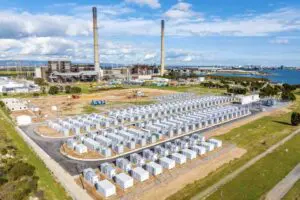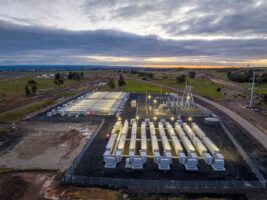Australian zinc bromine flow battery maker Redflow has signalled a continued focus on global industrial and remote energy storage markets, after a “pivotal year” building up the company’s commercialisation strategy.
In a results presentation wrapping up the 2018/19 financial year, Redflow weighed a 54 per cent decline in annual revenue against a number of “significant milestones,” including the ramping up of production capabilities at the company’s Thailand factory.
The Brisbane-based company, which counts tech entrepreneur Simon Hackett as its biggest shareholder, has spent the past two years repositioning itself in the energy storage market, after failing to compete with lithium-based battery products in the booming residential and commercial space.
In a presentation webcast on Friday, Redflow CEO and managing director Tim Harris stressed that this repositioning had not been due to a problem with the company’s core technology, but a re-focus on “customers that place a high value on our difference.”
This included the ZBM2 batteries’ ability to operate in high ambient temperatures and on a daily 100 per cent Depth of Discharge usage cycle without degrading storage capacity or lifetime.
“FY19 was a pivotal year for Redflow, significantly progressing our commercialisation strategy,” Harris said.
“Having moved our in-house manufacturing capabilities in Thailand the year before, our focus over the past 12 months was to re-engage with customers and partners.
“While some projects experienced customer delays, we received initial orders from several important projects and are confident that orders will scale in FY20 as we receive follow up orders and expand our customer base.”
A particular focus for the company has been the global telco market, which Harris described as having “enormous” growth potential, all things going to plan.
“Telco’s are already spending money on batteries and in some case many millions of dollars,” Harris said in a webcast on Friday.
“Once we’ve proven our technical and benefits, the opportunity for Redflow to scale up… even with a single customer, is enormous,” he said.
Harris also noted the successful launch and ramp-up in manufacturing of batteries in the Thai factory, where the company manufactured 150 batteries in December 2018, “proving our ability to manufacture quality batteries at volume.”
But he also stressed that the company was not abandoning other markets, such as residential and small commercial, having recently taken orders of batteries for child care centres in Melbourne, and – just last week – for 27 ZBM2 units for a farm in Tasmania, owned by Simon Hackett.
He said one of the major roadblocks to the Australian residential market was the almost singular consumer and industry focus on well established lithium-ion technologies.
“We will continue to support residential opportunities where we are approached, where we have strong partners, and where it makes economic sense,” Harris said.










